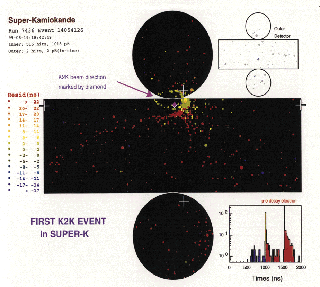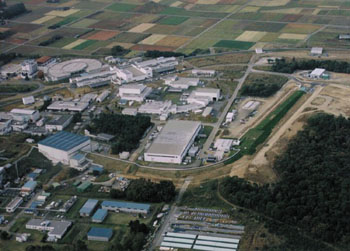
During 22 days of stable data-taking in June, the K2K Long Baseline Neutrino Oscillation experiment, connecting the Japanese KEK Laboratory with the detectors in the Kamioka mine 250 km away, observed four neutrino interactions in the inner Super-Kamiokande detector. This is the first step towards the verification of the neutrino oscillation results given by the Super-Kamiokande last year.
One event occurred inside the 22.5 kiloton “fiducial volume” (2 m from the inner photomultiplier tubes) and another three events occurred outside. The event characteristics are consistent with a neutrino interaction in water. More importantly, all four events happened within 1 µs of the time expected for neutrinos generated at KEK.

No further events were seen in the inner detector within 50 µs of the expected time. Before reaching the distant Super-Kamiokande detector, the neutrinos pass through a “near detector” on the KEK site. Both detectors have a clock synchronized by the Global Positioning System (GPS), which is accurate to 100 ns. The probability that each of the four events comes from an atmospheric neutrino interaction is estimated to be a few parts in 10 000.
The K2K experiment began tuning the beamline, beam monitors, magnetic horn system and the near detector on 5 March. All of the detector components worked as expected. During an engineering run from March to May, physicists ensured that neutrinos were being sent in the direction of Super-Kamiokande to an accuracy of 0.3 mrad and that the flux and the profile of the beam were as expected.

During the summer shutdown period, the KEK beamline group will be improving the transmission of the primary proton beamline and will increase the current of the magnetic horns. The KEK accelerator succeeded in circulating 6.5 x 1012 protons in nine bunches in the main ring in June and will look for a further improvement in intensity. Thus, K2K hopes to have more neutrinos in the coming run, which will be starting in late October.
The K2K experiment is an international collaboration of institutes from Japan, Korea and the US.







